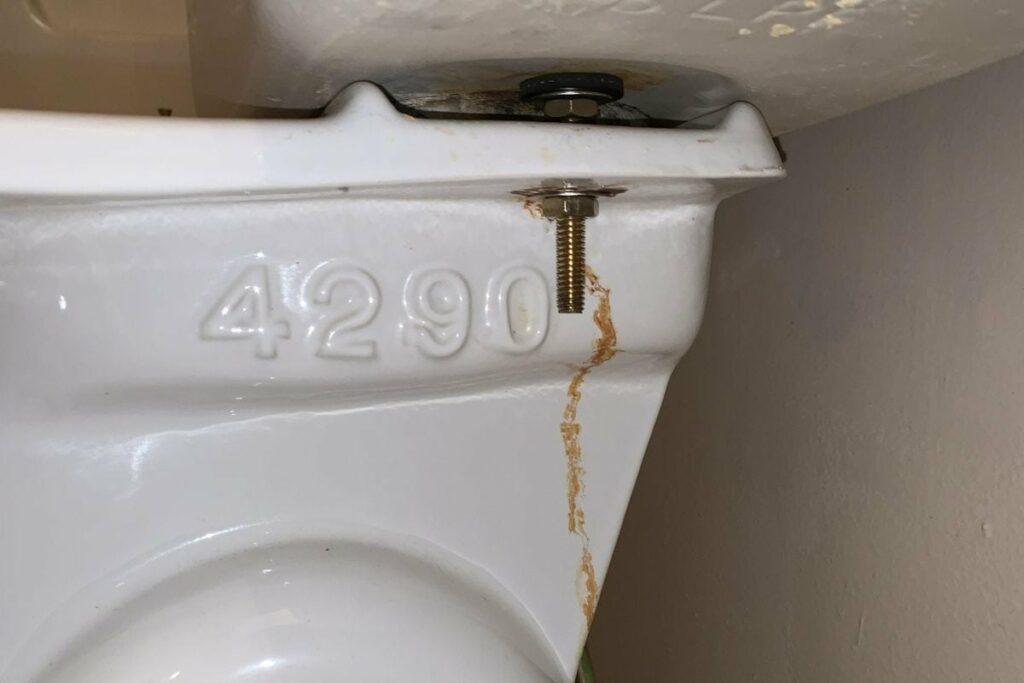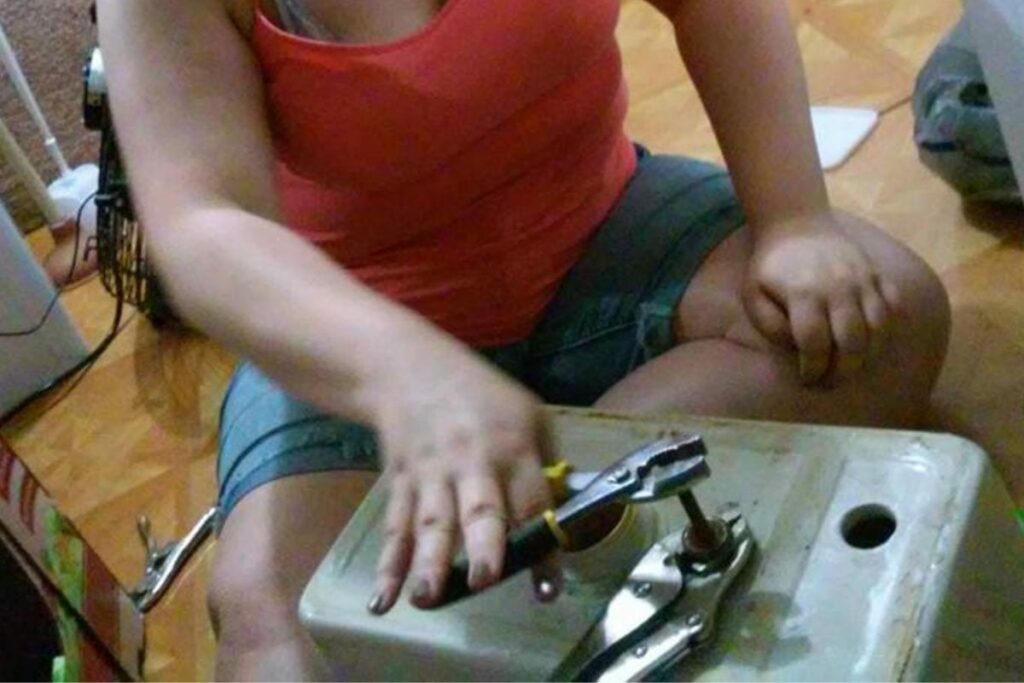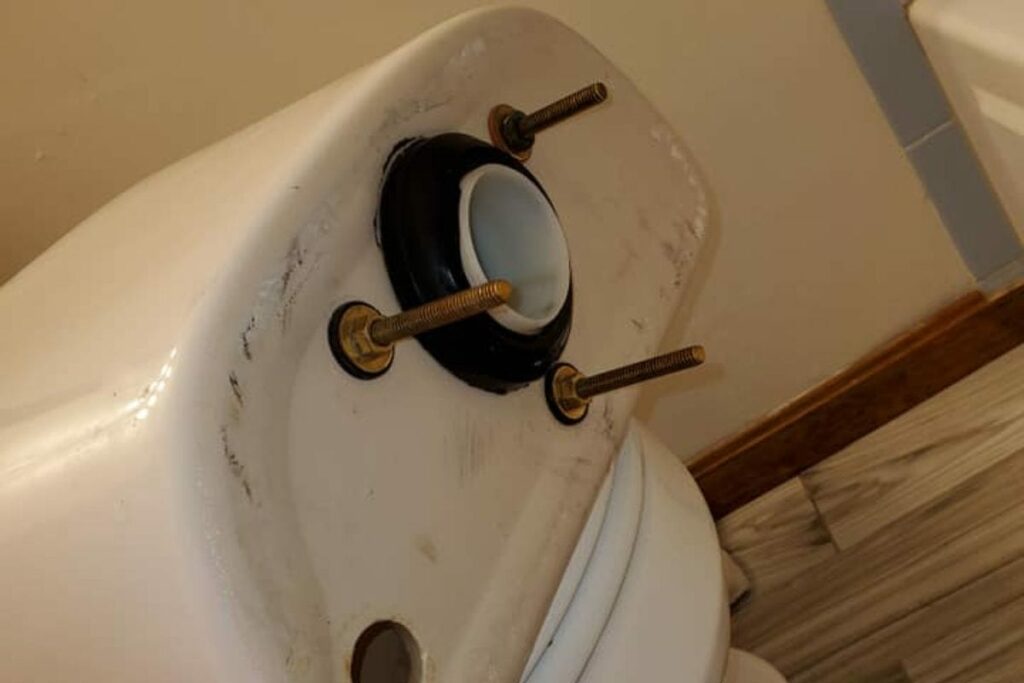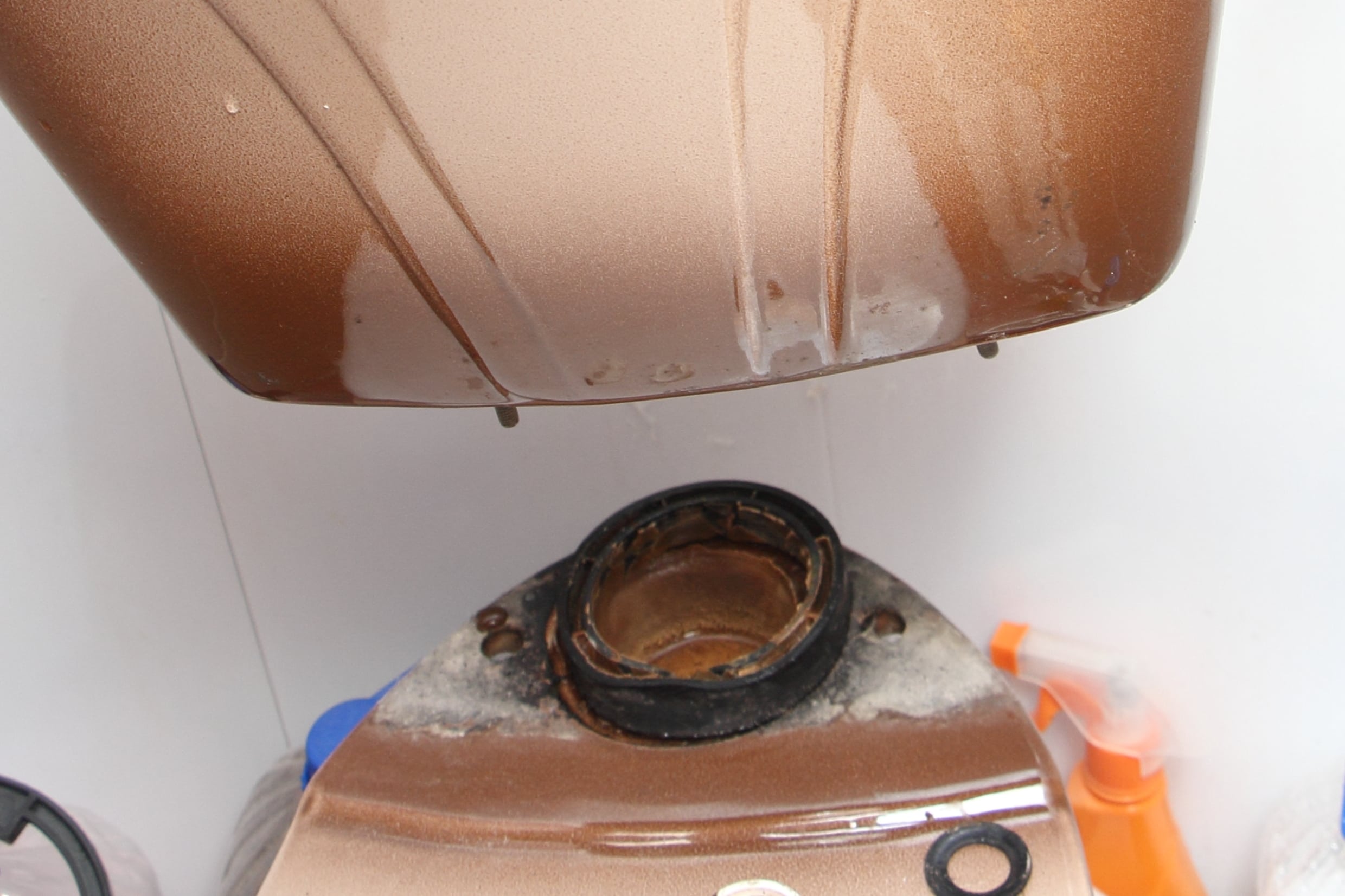Nothing is more frustrating than a leaking toilet. They can waste gallons of water each day – and it may be coming from a bolt in your toilet tank, not just the toilet bowl. Toilet tanks have moving parts inside them attached to bolts that can wear out over time. This causes leaks into the toilet bowl or floor. If you are experiencing a leak inside your toilet tank, this blog post will give you some tips on how to solve your toilet tank problem in 3 or 4 simple steps.
Why Toilets Leak Around the Tank Bolts
Toilets are a simple yet essential part of your home. They provide a place to relieve yourself and wash your hands, but they can also be a source of frustration and leaks if they aren’t installed properly.
The tank bolts are the most likely cause of leaks around the toilet. The bolts hold the toilet to its base and can loosen over time. They can also corrode from exposure to water or other chemicals in the toilet bowl. If you notice a leak around your toilet, scrutinize these areas.

If you find that your toilet is leaking around the tank bolts, it’s time to get them tightened up. When your toilet is leaking around the tank bolts, there are three main reasons why this might happen:
- The bolts have loosened over time and need tightening. The gasket has worn out and needs replacing. The flange has shifted out of place or deteriorated due to corrosion from repeated use and exposure to water.
- The seal between the tank and bowl is broken. This will cause water to run out of the bottom of the tank when you flush. It may also cause water to puddle around the base of your toilet.
- The flange may be cracked or broken and needs replacement.
What Tools are Needed to Replace the Bolts and Gaskets?
When replacing a car’s head gasket, you should use many tools. Here is a list of what tools are needed to replace the bolts and gaskets:
Screwdrivers: You will need several screwdrivers to remove your engine bay’s engine cover and other components. You can never have enough screwdrivers when working on cars.

Socket wrenches: Socket wrenches come in all shapes and sizes, but you can use them to remove just about everything on your car’s engine bay except for spark plugs or injectors (these require special tools).
Ratchet handle. A ratchet handle allows you to turn a socket without holding it in place manually with your hand or finger. This will enable you to control how much torque is applied during tightening and loosening operations, making it easier to avoid stripping threads or damaging parts during installation or removal.
Socket set. A socket set is a collection of sockets that fit over various types of nuts and bolts. Most socket sets include standard and metric sizes, although some only have one or the other. It is also possible to purchase a socket set with a ratchet handle attached for convenience. The socket sizes available range from 1/4″ (6 mm) up to 3/4″ (19 mm).
How to Fix it
Fixing this problem is usually pretty straightforward, but you need to know what type of material you are working with.
If you have a cast iron or porcelain toilet, you can use a wax ring on top of the flange. If you have plastic or composite material, there is usually a wax gasket already installed on top of the flange, but it may be hard to see if it is leaking and needs replacement. You’ll need to tighten or replace one or more of your tank bolts to fix either problem. Here’s how:

1. Shut off the water to the toilet.
If you have an older toilet, it may have a shutoff valve on the wall behind it. If you have newer toilets, you will need to turn off the water supply coming into your house. If you don’t know how to do this, call a plumber!
2. Drain and flush the tank.
Remove the tank cover by unscrewing the screws on each side of it with a socket set or wrench. Liftoff the cover once you’ve removed all of the screws.
Gently remove any debris from the inside of the tank using a small bowl brush or old toothbrush.
Place an old towel on top of your work surface and set your toilet on top so that it’s stable and won’t move around while working on it.
Unscrew each bolt holding down one side of your toilet using a ratchet or socket set and place them aside where they won’t get lost or mixed up with other hardware in your home (you’ll need them later). Make sure not to lose any rubber washers that might be under each bolt head when you unscrew them (they look like little rings). Also, check for any plastic caps hiding underneath each.
3. Clean the bolts and base of the tank.
Before reattaching the bolts, use a cloth or toothbrush to clean the area surrounding each one, so you know precisely where they go. Lift-off the tank’s lid (some lids lift-off while others have hinges) and remove any debris with a toothbrush or other small brush. Clean around the tank’s base where it meets the bowl with a sponge or rag dipped in white vinegar (vinegar kills germs).
Please remove all the bolts that hold down the toilet tank (there should be three on newer toilets and two on older ones) and clean them thoroughly with an old toothbrush or pipe cleaner dipped in vinegar. Put new rubber seals around these bolts before putting everything back together again!

4. Replace any damaged parts.
If there is damage where your tank meets its base, use JB Weld epoxy (available at hardware stores) or silicone sealant to secure these areas while you wait for replacement parts.
The toilet tank bolts are usually sealed with a rubber washer. If that washer is cracked or broken, it will leak water into the bowl when you flush. You can find replacement washers at any hardware store.
To replace the washer, turn off the water supply to your toilet and flush it to drain out as much water as possible. Use a rag or plumber’s helper to hold down the float to keep the tank from filling up with water again.
If your toilet is leaking from the tank bolts, you can fix it by replacing the tank bolts. You’ll need a screwdriver, a wrench, and new tank bolts.

5. Flush, refill, and reset the toilet.
There are three main ways to flush, refill, and reset the toilet: the plunger, hose, and bucket. The plunger method is the most common and is used when the clog is close to the drain. The hose method is used when the clog is further down the drain and needs more water pressure. The bucket method is a last resort and should only be used if all other methods have failed.
6. Inspect to determine if there are any more leaks.
If you don’t find any visible signs of leaking, inspect the inside of your tank thoroughly for cracks or corrosion from corrosion-resistant screws that may have loosened over time due to frequent use. You should also check around your valve seat and gasket for signs of damage or corrosion, which could cause leaks, and around both supply lines for cracking or bending, which could also result in leaking problems if left unattended long enough!
Conclusion
Fixing this issue yourself is not too difficult if you follow the steps above. Give the tank bolts a tiny drop of thread locker before replacing them, and you won’t have to worry about leaks for a long while.

Amos Christen graduated with a bachelor’s degree in Interior Design from Drexel University — Philadelphia, PA. Since 2003, Amos has worked with top interior design professionals in this area, including architects and interior/graphic/lighting designers. As a skilled interior designer, Amos Christen is highly versed in fine arts and crafts and uses that to supplement his main area of expertise. He often publishes articles related to home décor on several websites, including Sprucetoilets.com, Sprucebathroom.com, and Mybesuitedhome.com. He also contributes to leading interior design magazines.
